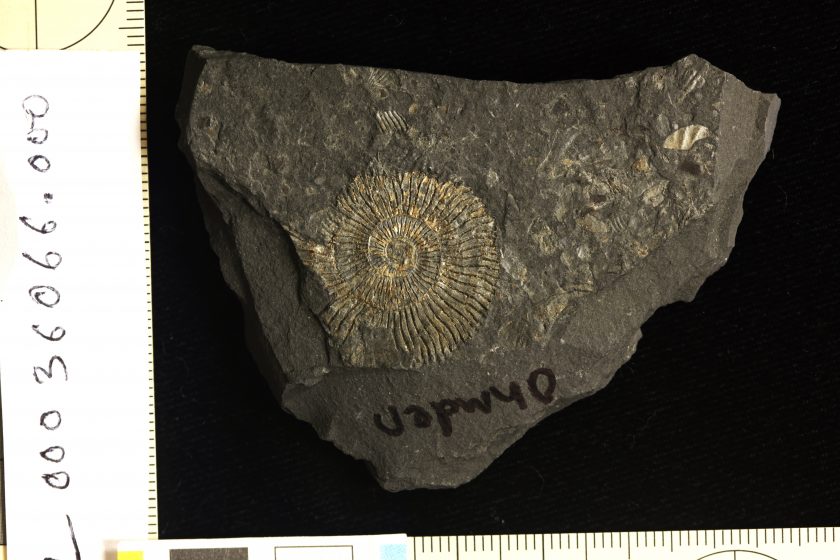All that glitters isn’t usually gold, and the same is true for 183 million-year-old fossils found in the Posidonia Shale. Moreover, while the researchers used to think the shiny gold coating on the fossils was fool’s gold, new research has revealed a more surprising answer.
The Posidonia Shale in southwest Germany is the source of many of these golden-hued fossils, particularly those of soft-bodied sea life such as squid and ichthyosaur embryos that were around in the early Jurassic. These geological deposits containing soft-bodied preserves are known as Konservat-Lagerstätten and are extremely rare.
Previously it was thought that anoxic conditions helped to fossilize these specimens. While pyrite, also known as fool’s gold, was thought to be the source of this shine, a closer inspection has revealed more about the conditions in which these fossils were formed.
“When you go to the quarries, golden ammonites peek out from black shale slabs,” said study co-author Rowan Martindale, an associate professor at the University of Texas at Austin Jackson School of Geosciences, in a statement. “But surprisingly, we struggled to find pyrite in the fossils. Even the fossils that looked golden, are preserved as phosphate minerals with yellow calcite. This dramatically changes our view of this famous fossil deposit.”
The team used scanning electron microscopes to take a closer look at these shiny specimens. While the researchers did discover traces of microscopic pyrite crystals called framboids in the surrounding material, they found that in every specimen the fossils were mostly made up of phosphate minerals.

Ammonite fossil from the Ohmden quarry, Posidonia shale lagerstätte. Image credit: Sinjini Sinha
“I spent days looking for the framboids on the fossil,” said co-author Sinjini Sinha, a doctoral student at the Jackson School. “For some of the specimens, I counted 800 framboids on the matrix while there was maybe three or four on the fossils.”
The makeup of these fossils reveals clues about the environment that they formed in millions of years ago. Pyrite forms under anoxic conditions, while the phosphate minerals need oxygen – this suggests that initially the sea floor was anoxic, helping to preserve the fossils, but that an influx of oxygen was needed to encourage the chemical processes needed for this kind of fossilization.
“It’s been thought for a long time that the anoxia causes the exceptional preservation, but it doesn’t directly help,” said Sinha. “It helps with making the environment conducive to faster fossilization, which leads to the preservation, but it’s oxygenation that’s enhancing preservation.”
The team thinks that the fossils were not preserved in anoxic conditions in the bottom water of the sediment, but rather that phosphatization happened at the boundary of the anoxic and oxygenated conditions within the sediment itself, and that oxygen was crucial for the preservation of these fossils in the Posidonia Shale. They also believe that these conditions are responsible for bringing out the fossils’ golden shine.
The study is published in Earth Science Reviews.
Source Link: Beautiful Golden Fossils Reveal Process Of Fossilization 183 Million Years Ago